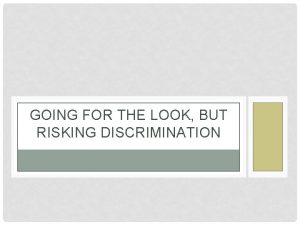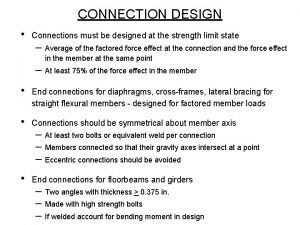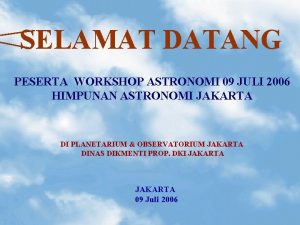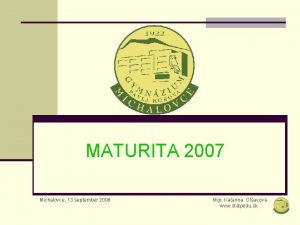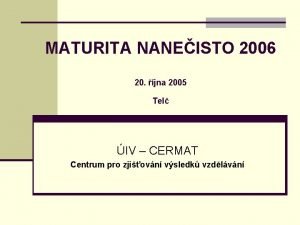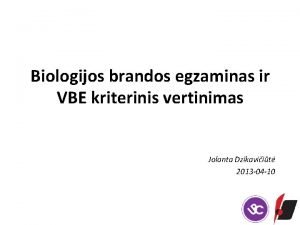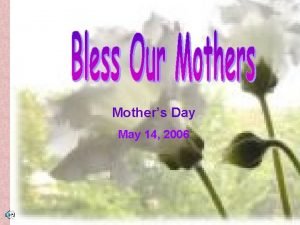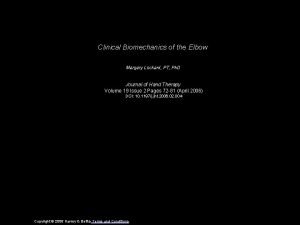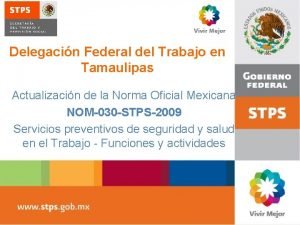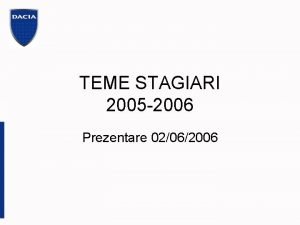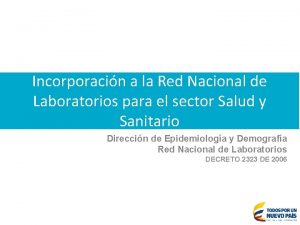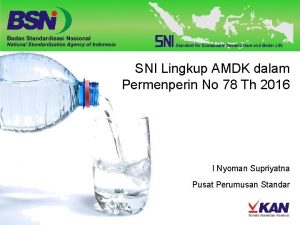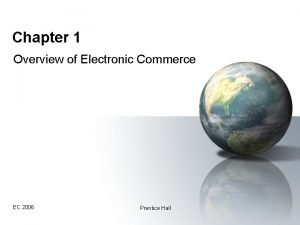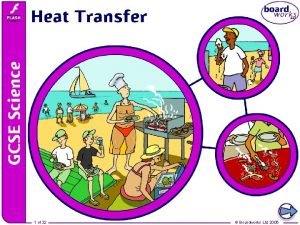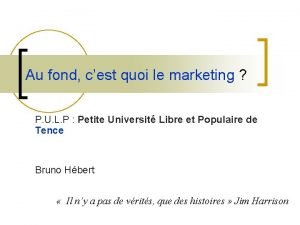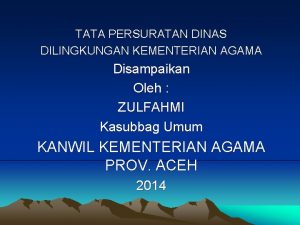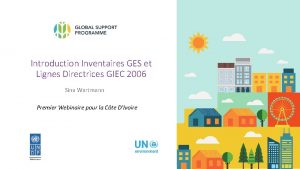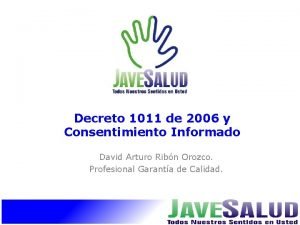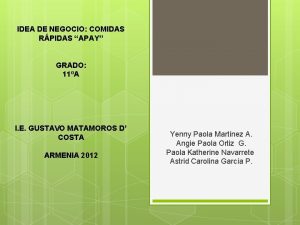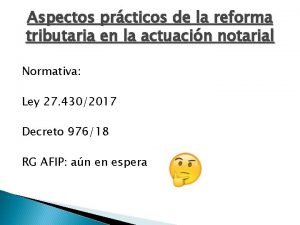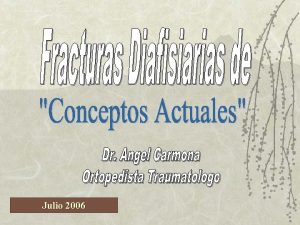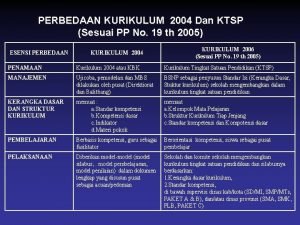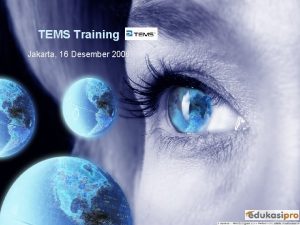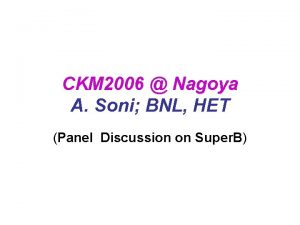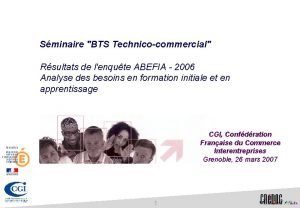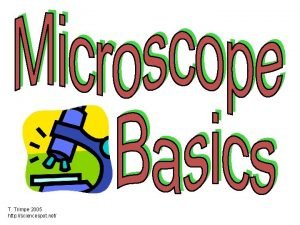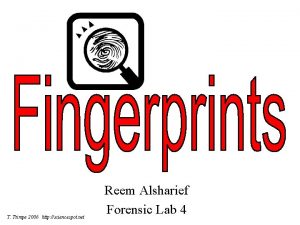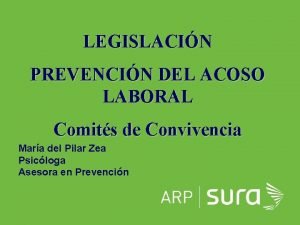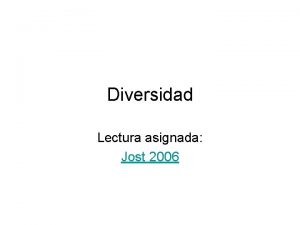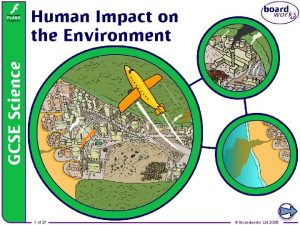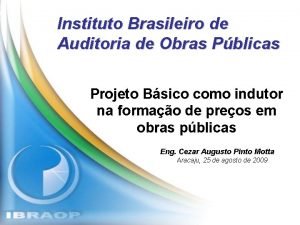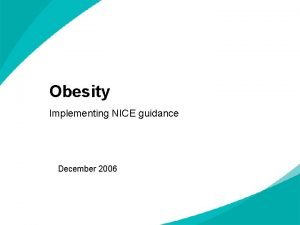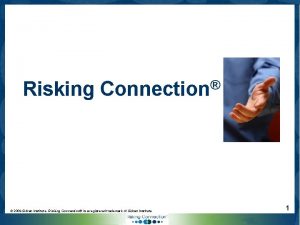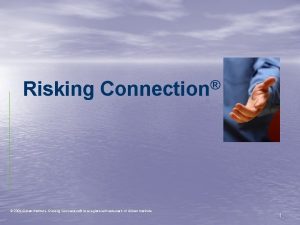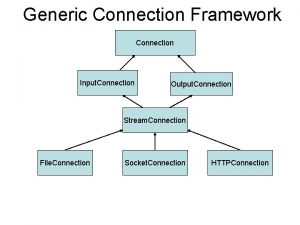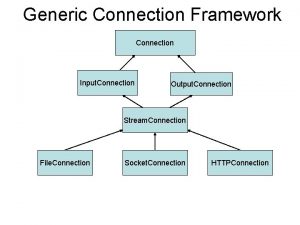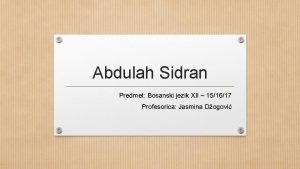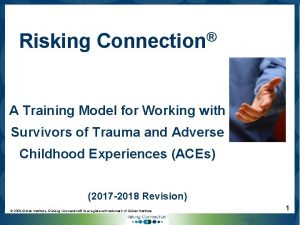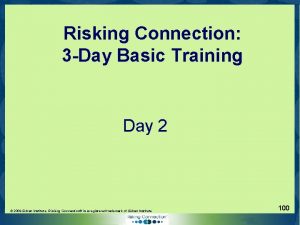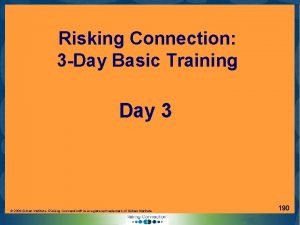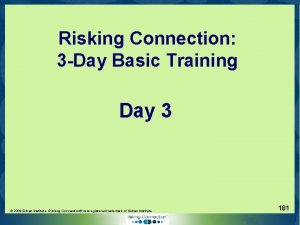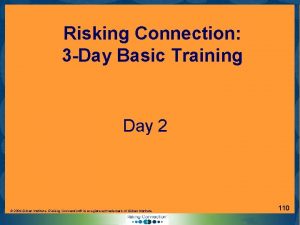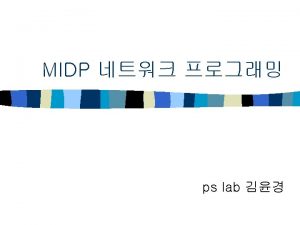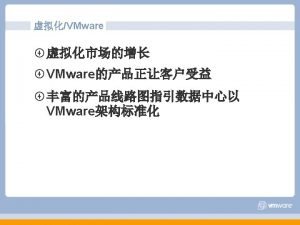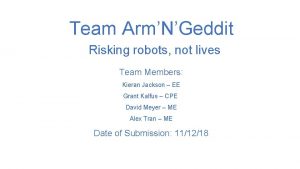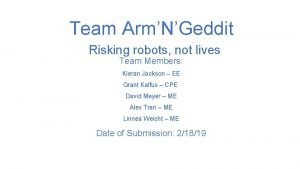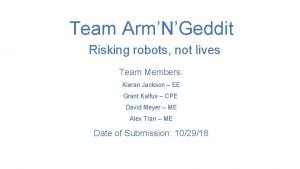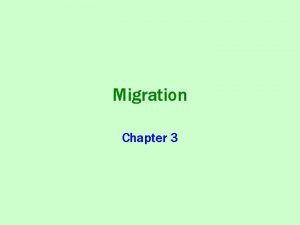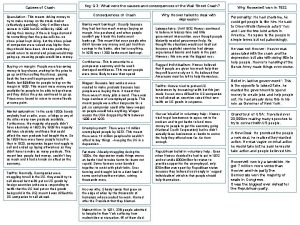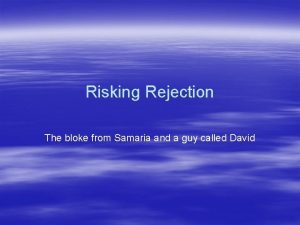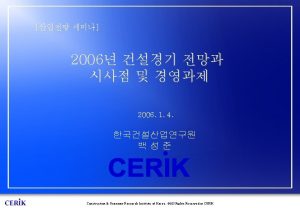Risking Connection 2006 Sidran Institute Risking Connection is





















































- Slides: 53

Risking ® Connection © 2006 Sidran Institute. Risking Connection® is a registered trademark of Sidran Institute 1

Presenters: Joanne Malinka-Morgan, LCSW Jennifer Capalbo, LCSW © 2006 Sidran Institute. Risking Connection® is a registered trademark of Sidran Institute 2

What is Psychological Trauma? Trauma is the unique individual experience of an event or enduring conditions in which: The individual’s ability to integrate his or her emotional experience is overwhelmed; and The individual experiences a threat to life, bodily integrity, or sanity. p. 5 © 2006 Sidran Institute. Risking Connection® is a registered trademark of Sidran Institute 3

Underlying Assumptions About Treatment of Trauma Traditional Model Trauma Model © 2006 Sidran Institute. Risking Connection® is a registered trademark of Sidran Institute 4

TRAUMA FRAMEWORK Childhood Traumatic Experience(s) Traumatized Development Disrupted Attachment Sensitized Nervous System Impaired Self Capacities ØInner Connection ØWorthy of Life ØFeelings Management Current Stress (Trigger) Intolerable Feelings Extreme coping Strategies = Symptoms/Behaviors = Adaptations Retreat Self-Destruction © 2006 Sidran Institute. Risking Connection® is a registered trademark of Sidran Institute Other Destruction 5

Attachment under Normative Conditions Attachment is an innate biological response to stress. v Danger/vulnerability v Physiological arousal v Heightens attachment needs v Child sends distress signal v Draws attention of caregiver who reestablishes closeness and protection v Reunion reduces physiological arousal and emotional distress v Return to regulated calm state © 2006 Sidran Institute. Risking Connection® is a registered trademark of Sidran Institute 6

Hannah Distressed © 2006 Sidran Institute. Risking Connection® is a registered trademark of Sidran Institute 7

Hannah Calm © 2006 Sidran Institute. Risking Connection® is a registered trademark of Sidran Institute 8

Attachment under Normative Conditions (3) This process happens thousands of times during normal development. Children, over time, begin to learn to regulate their own distress. © 2006 Sidran Institute. Risking Connection® is a registered trademark of Sidran Institute 9

Sensitized Nervous System: Normal Human Danger Response Danger/threat Startle and defensive orienting Locate/assess threat Fight or Flee Freeze Hyper-arousal Focused attentionsafety and danger Extreme alertness Stops non-essential bodily functions Focused thinking to assess danger Calm down Use of supportive others © 2006 Sidran Institute. Risking Connection® is a registered trademark of Sidran Institute 10

Sensitized Nervous System: Human Danger Response Malfunctions Real dangers Small triggers Startle and defensive orienting Locate/assess threat Fight, Flee and/or Freeze Hyper-arousal Focused attentionsafety and danger Extreme alertness Stops non-essential bodily functions Focused thinking kicks in to assess danger Hyper-arousal Stuck on “on” Numb, shut down, Dissociate Rollercoaster from “on” to shut down © 2006 Sidran Institute. Risking Connection® is a registered trademark of Sidran Institute 11

Sensitized Nervous System: Implications ØChild stuck in danger response mode ØChild makes mountains out of molehills ØChild cannot think when stuck on “on” Over time, child can gain access to more thinking and problem solving when upset Changing the brain is possible – takes time and MANY, MANY repetitions © 2006 Sidran Institute. Risking Connection® is a registered trademark of Sidran Institute 12

The Three Feelings Skills: Self Capacities 1. Inner connection to others 2. Feeling worthy of life 3. Managing feelings pp. 19 -22 © 2006 Sidran Institute. Risking Connection® is a registered trademark of Sidran Institute 13

Symptoms/Behaviors Are Adaptations Symptoms/behaviors are ways clients have learned to adapt to (cope with) intolerable feelings, memories, and situations in their lives. Symptoms/behaviors help the child in the moment -despite long-term negative consequences. © 2006 Sidran Institute. Risking Connection® is a registered trademark of Sidran Institute 14

© 2006 Sidran Institute. Risking Connection® is a registered trademark of Sidran Institute 15

MOVIE CLIP (Matilda) © 2006 Sidran Institute. Risking Connection® is a registered trademark of Sidran Institute 16

Exercise 1 Get together with your group and explore how the concepts of symptoms as adaptations and feelings capacities relate to one child/client that you work with in your program. © 2006 Sidran Institute. Risking Connection® is a registered trademark of Sidran Institute 17

Introduction to Vicarious Traumatization © 2006 Sidran Institute. Risking Connection® is a registered trademark of Sidran Institute 18

Vicarious Traumatization What is VT? Symptoms nearly identical to PTSD except that exposure to a traumatizing event experienced by the client becomes a traumatizing event of the worker. It can have an impact on the person’s sense of self, world view, spirituality, affect tolerance, interpersonal relationships, and imagery system of memory. © 2006 Sidran Institute. Risking Connection® is a registered trademark of Sidran Institute pp. 33 -34 19

Vicarious Traumatization • VT is an inescapable effect of trauma work -- an occupational hazard. • It is neither the fault of the client, nor a result of “weakness” on the part of the treater. • VT damages hope and optimism, which are essential gifts we bring to our work. © 2006 Sidran Institute. Risking Connection® is a registered trademark of Sidran Institute pp. 157 -159 20

How VT Changes Us VT can impact: • Our identity, world view, and spirituality • Our core beliefs about safety, trust, esteem, control, and intimacy • Our own ability to manage feelings © 2006 Sidran Institute. Risking Connection® is a registered trademark of Sidran Institute 21

Some People Say …… A Child care worker reported, “My partner and I were house hunting and looked at several older homes. I realized I could not go with her into the basements because I was flooded with pictures of what had happened to my clients in basements. One client in particular had described the musty smell she associated with abuse, and I was aware of that smell in basements. ” A guard at a prison confessed, “ I have triple locks on all my doors now. I never used to be this way. ” A therapist shared, “I considered myself a deeply spiritual person, but I don’t know where that sense of connection to the universe has gone. ” Transforming the Pain by Pearlman & Saakvitne (W. W. Norton & Company, 1996) © 2006 Sidran Institute. Risking Connection® is a registered trademark of Sidran Institute 22

VT Exercise 1 TOXIC DUMPING GROUND © 2006 Sidran Institute. Risking Connection® is a registered trademark of Sidran Institute 23

How do we address our VT? Self-Care: improve quality of life and decrease stress in it. Balance, limits, healthy habits, and connection to others. Nurturing activities: focus on pleasure and comfort, relaxation and play. Escape: activities that allow us to forget about work, to engage in fantasy and forget about painful feelings. © 2006 Sidran Institute. Risking Connection® is a registered trademark of Sidran Institute 24

Transforming the pain …. • Create meaning • Challenge your • negative beliefs and assumptions. Participate in community building activities. © 2006 Sidran Institute. Risking Connection® is a registered trademark of Sidran Institute 25

Principles of Collaborative Crisis Management © 2006 Sidran Institute. Risking Connection® is a registered trademark of Sidran Institute 26

A RICH relationship: The key to healing and the agent of change These four components define a relationship that is therapeutic, whether it lasts five minutes or five years: Respect Information Connection Hope © 2006 Sidran Institute. Risking Connection® is a registered trademark of Sidran Institute 27

A Collaborative Model for Crisis Management • Many of the major failures in treatment of trauma survivors occur in our responses to crises • The client’s participation in, and anticipation of, crisis intervention is essential. © 2006 Sidran Institute. Risking Connection® is a registered trademark of Sidran Institute pp. 77 -78 28

Collaborative Crisis Management What To Do: Before the crisis During the crisis After the crisis Note: The following principles can be integrated into any existing crisis management curriculum, e. g. , TCI, CP/I, etc. © 2006 Sidran Institute. Risking Connection® is a registered trademark of Sidran Institute 29

ROLE PLAY Presented by: Enid Peterson, LCSW David Barringer, LCSW © 2006 Sidran Institute. Risking Connection® is a registered trademark of Sidran Institute 30

Collaborative Crisis Management Before The Crisis © 2006 Sidran Institute. Risking Connection® is a registered trademark of Sidran Institute 31

Collaborative Crisis Prevention Before the Crisis: Build Self-Capacities Create Crisis Prevention Plans © 2006 Sidran Institute. Risking Connection® is a registered trademark of Sidran Institute 32

Before the Crisis: Collaborative Crisis Prevention Plans ask: – What upsets you? – What are the first signs that you are getting upset? – What helps you when you’re upset? – What doesn’t help? Crisis Prevention Plans are living documents, continually reviewed and modified with the client. © 2006 Sidran Institute. Risking Connection® is a registered trademark of Sidran Institute 33

Collaborative Crisis Management During the Crisis © 2006 Sidran Institute. Risking Connection® is a registered trademark of Sidran Institute 34

During the Crisis: Four Principles 1. Remember Symptoms are Adaptations 2. Stay RICH 3. Stay Calm 4. Focus only on resolving the crisis © 2006 Sidran Institute. Risking Connection® is a registered trademark of Sidran Institute pp. 78 -79 35

During the Crisis 2. Stay RICH Respect: Validate the child’s emotional experience of the situation; watch your tone, inflection, posture, eye contact, etc. Information: Inform the child of what is happening, your intentions, what you need from her, what will happen next; offer choices; offer ideas for self-soothing. © 2006 Sidran Institute. Risking Connection® is a registered trademark of Sidran Institute 36

During the Crisis 2. Stay RICH Connection: Assume child feels alone in her distress. Offer yourself as a connection. Bring in others who are connected to the child. Hope: Offer hope that together you and the child can get through this. Remind child of previous success at overcoming similar challenges. © 2006 Sidran Institute. Risking Connection® is a registered trademark of Sidran Institute 37

During the Crisis 3. Stay Calm Yourself • Use calming techniques (e. g. , deep breathing, count to 10, etc. ) • Watch your body language • If you can’t stay calm, fake it! • If you can’t fake it, get help (i. e. switch out) • Remember: Don’t take the behavior personally Children become regulated in the presence of regulated adults. © 2006 Sidran Institute. Risking Connection® is a registered trademark of Sidran Institute 38

During the Crisis 4. Focus Only On Resolving the Crisis If the child is emotionally or behaviorally upset… – Focus on helping the child calm down – Validate! (Validation doesn’t necessarily mean agreement) – Discuss consequences LATER © 2006 Sidran Institute. Risking Connection® is a registered trademark of Sidran Institute 39

Think about the last time you almost crashed your car …. . In those split seconds, you felt …. . © 2006 Sidran Institute. Risking Connection® is a registered trademark of Sidran Institute 40

Collaborative Crisis Management After the Crisis © 2006 Sidran Institute. Risking Connection® is a registered trademark of Sidran Institute 41

After the Crisis To reduce chance of crisis recurring, team (with client) review incident to: • Better understand the function of problem behavior • Consider replacement behaviors that serve similar • function with fewer negative consequences Process impact of the event on relationships. Make it relational. © 2006 Sidran Institute. Risking Connection® is a registered trademark of Sidran Institute 42

After the Crisis To better understand function of the problem behavior, the team (with client) consider: What is the function of the behavior? How does the behavior help the client in the moment? Why did it happen then? Ask the “why under the why” The reasons children act out are generally not intentional or conscious © 2006 Sidran Institute. Risking Connection® is a registered trademark of Sidran Institute 43

Example THE STAR PROGRAM How we applied the restorative model to process with children After a Crisis Presented by: Felix – Program Supervisor © 2006 Sidran Institute. Risking Connection® is a registered trademark of Sidran Institute 44

Dissociative Episodes and Flashbacks © 2006 Sidran Institute. Risking Connection® is a registered trademark of Sidran Institute 45 45

Dissociative Episodes and Flashbacks Dissociation: • is a hallmark of post-traumatic reactions. • can be used in both helpful and • • problematic ways (continuum). involves a change in a person’s normal attention and concentration. usually involves a suspension of critical thinking or mature judgment. pp. 116 -117 © 2006 Sidran Institute. Risking Connection® is a registered trademark of Sidran Institute 46 46

Three Forms of Dissociation • An obvious change in awareness, • • consciousness, or mental state (like “spacing out”). A flashback, when a client seems to relive a traumatic experience with vivid intensity. A change in identity, such as when a client speaks in a different voice or behaves like a different person. pp. 117 -118 © 2006 Sidran Institute. Risking Connection® is a registered trademark of Sidran Institute 47 47

Grounding Reconnects the person to her/his body and reorients the person to the present. The Four “W’s” Who they are, who you are Where they are now When it is now: day, time, year What is happening now, what is the context Directed Awareness Use your senses © 2006 Sidran Institute. Risking Connection® is a registered trademark of Sidran Institute p. 119 48 48

Grounding Sample techniques: • Firmly plant each foot on the ground, one at a time. • Take three deep breaths; release each slowly. • Stretch your upper body. • Shake out your legs. • Visualize a safe or protected place. p. 120 © 2006 Sidran Institute. Risking Connection® is a registered trademark of Sidran Institute 49 49

Grounding (2) Sample techniques: Do pushups against the wall. Smell Vicks Vapo. Rub Carry a shell in your pocket. Touch it to remind yourself you are older now, etc. Spray yourself with a fine water mister. © 2006 Sidran Institute. Risking Connection® is a registered trademark of Sidran Institute 50 50

When a Client Is Experiencing a Flashback • Speak gently and firmly. • Give reassurance and information. • Validate that the client is frightened and having a flashback. • Help ground the client to the present. p. 122 © 2006 Sidran Institute. Risking Connection® is a registered trademark of Sidran Institute 51 51

Movie Clip Corrina, Corrina © 2006 Sidran Institute. Risking Connection® is a registered trademark of Sidran Institute 52

Exercise Creating meaning and hope … © 2006 Sidran Institute. Risking Connection® is a registered trademark of Sidran Institute 53
 Going for the look but risking discrimination
Going for the look but risking discrimination Text to world connection examples
Text to world connection examples Bolted connection
Bolted connection A307 bolt shear strength
A307 bolt shear strength Minimum fillet weld size
Minimum fillet weld size Jane eyre cast
Jane eyre cast 09 juli 2006
09 juli 2006 Luthans 2006
Luthans 2006 Maturita 2006
Maturita 2006 Maturita 2006
Maturita 2006 Biologijos vbe
Biologijos vbe Mothers day 2006
Mothers day 2006 2006 kids
2006 kids 2006-1972
2006-1972 Nom 030 stps 2006
Nom 030 stps 2006 2006
2006 02062006
02062006 Deepotsav calligraphy
Deepotsav calligraphy Decreto 2323 de 2006
Decreto 2323 de 2006 Sni 3554:2015
Sni 3554:2015 2006
2006 Boardworks ltd 2006
Boardworks ltd 2006 Mercedes quesada etxaide
Mercedes quesada etxaide 18/11/2006 lunaf
18/11/2006 lunaf Tata persuratan kemenag
Tata persuratan kemenag Giec 2006
Giec 2006 Decreto 1011 de 2006
Decreto 1011 de 2006 Pelan induk pembangunan pendidikan 2006 hingga 2010
Pelan induk pembangunan pendidikan 2006 hingga 2010 Chemistry january 2018 answers
Chemistry january 2018 answers Vision de una empresa de comidas rapidas
Vision de una empresa de comidas rapidas Gracias por su atencion
Gracias por su atencion Clasificacion johner y wruhs
Clasificacion johner y wruhs Nasa academy application
Nasa academy application Substansi struktur kurikulum dalam kurikulum tahun 2004
Substansi struktur kurikulum dalam kurikulum tahun 2004 Tems drive test training
Tems drive test training Het panel
Het panel Matab senaei 2006
Matab senaei 2006 T trimpe
T trimpe T. trimpe 2006 http //sciencespot.net/
T. trimpe 2006 http //sciencespot.net/ Banking ombudsman scheme 2006
Banking ombudsman scheme 2006 T. trimpe 2006 http://sciencespot.net/
T. trimpe 2006 http://sciencespot.net/ Ley 1010 de 2006
Ley 1010 de 2006 T. trimpe 2006 http://sciencespot.net/
T. trimpe 2006 http://sciencespot.net/ Gina 2006
Gina 2006 Astronomy picture of the day march 29 2006
Astronomy picture of the day march 29 2006 Monarch awards 2006
Monarch awards 2006 Picture nasa took on feb 14 2006
Picture nasa took on feb 14 2006 Sciencespot
Sciencespot T.trimpe 2006 http sciencespot.net
T.trimpe 2006 http sciencespot.net Jost 2006
Jost 2006 2006 mcgraw-hill ryerson limited
2006 mcgraw-hill ryerson limited Boardworks ltd 2006
Boardworks ltd 2006 Ot ibr 01/2006
Ot ibr 01/2006 Nice 2006
Nice 2006
